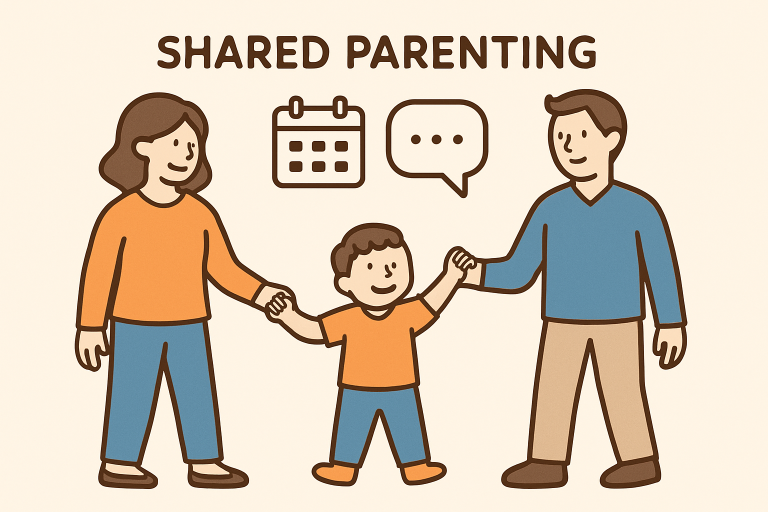Key Takeaways
- Consistent recognition creates a thriving, engaged workplace.
- Small gestures, such as thank-you notes or milestone celebrations, significantly impact morale.
- Creating formal and inclusive recognition programs strengthens retention and job satisfaction.
- Budget-friendly and peer-driven recognition options ensure accessibility for every organization.
- Measuring results through feedback and engagement data continually enhances the recognition culture.
Table of Contents
- Why Recognition Matters
- Small Gestures with Big Impact
- Implementing a Recognition Program
- Overcoming Challenges
- Measuring the Impact
- Conclusion
Why Recognition Matters
Consistent recognition is more than just a morale booster—it’s a critical component of a healthy workplace culture. Employees who feel seen and appreciated are likelier to remain engaged, motivated, and loyal. Simple, sincere gestures such as thank-you notes, public acknowledgments, or small tokens of appreciation can have a lasting impact. Recognition communicates value and fosters a sense of belonging, helping to build stronger teams and more collaborative environments.
While grand gestures aren’t always necessary, tangible symbols of appreciation can elevate the meaning behind the message. Items like crystal awards serve as lasting reminders of an employee’s contributions and dedication, reinforcing the importance of their role. These physical expressions of recognition can be significant during milestones or team celebrations, blending formality with sincerity. Ultimately, thoughtful recognition—big or small—helps shape a culture where people feel valued and inspired to give their best.
Small Gestures with Big Impact
Building a recognition culture isn’t about grand, rare gestures—the little, everyday acknowledgments make the most significant difference. Here’s how small acts can ripple effect throughout the workplace: Even the busiest managers can afford the time to pause and recognize effort, and such moments become part of a positive team dynamic. When simple gestures are woven into daily routines, employees are more likely to pay it forward, prompting a cycle of positivity.
Personalized Thank-You Notes
A handwritten thank-you note expressing genuine appreciation is one of the most meaningful forms of recognition. A personal note shows attentiveness and builds trust between leaders and team members by referencing specific actions or achievements. It also provides a lasting memento that employees can revisit during challenging times as a reminder of their value. Thank-you notes can be tailored to reflect an individual’s role or recent project, making the recognition feel earned rather than generic.
Public Acknowledgment
Whether shouted out during a company-wide meeting or highlighted in internal newsletters, public praise spotlights positive behavior and inspires others to follow suit. This approach reinforces company values and validates hard work in front of peers. When employees see their colleagues celebrated, the recipient feels appreciated and is motivated to strive for similar acknowledgment. Public appreciation is a visible indicator of what is valued within the organization.
Celebrating Milestones
Recognizing key moments—such as work anniversaries, project completions, or certification attainment—instills a sense of accomplishment and belonging. Milestone celebrations are opportunities to gather and reflect on the collective journey. They go beyond the individual, strengthening team cohesion and marking progress. Even modest celebrations like sharing a cake or sending congratulatory emails can help people look forward to milestones and feel proud of their journey within the company.
Peer-to-Peer Recognition
Encouraging employees to acknowledge each other’s contributions builds camaraderie and a supportive team environment. Tools like shout-out boards or digital recognition platforms make peer appreciation accessible and visible for everyone. This inclusive approach democratizes recognition, showing that gratitude doesn’t always have to come from the top down. When team members recognize each other’s efforts, it bridges departmental gaps and helps break down silos, creating a sense of unity.
Implementing a Recognition Program
Structured programs are essential to weaving recognition into the fabric of organizational culture. A sound recognition framework standardizes appreciation and makes it an ongoing priority. Designing an effective program means considering the workforce’s unique characteristics and the organization’s goals. Recognition programs should be designed collaboratively to ensure they resonate across the organization, garnering buy-in and enthusiasm.
- Develop a Formal Program: Establish clear criteria and transparent processes for granting recognition. Define what behaviors or achievements are celebrated and how to nominate colleagues or team members. Set up a schedule for regular recognition events and solicit ongoing input from staff to ensure fairness and relevance.
- Encourage Peer-to-Peer Recognition: Offer opportunities for every employee to participate in the recognition process, making it an inclusive and participatory experience. Peer-driven recognition creates a culture of mutual respect. This also empowers individuals at every level to recognize excellence, promoting a sense of agency and togetherness throughout the organization.
- Leverage Digital Tools: Utilize modern recognition platforms and apps to facilitate consistent, trackable appreciation efforts, no matter where teams are located. Digital tools can automate reminders, track milestones, and compile data on participation, ensuring no achievements slip through the cracks.
- Train Leaders: Equip managers with the skills and knowledge needed to give meaningful recognition regularly. Leadership buy-in is crucial for successful program adoption and sustainability. Continuous feedback and leader training help ensure that recognition is provided in a way that aligns with company values and meets the needs of diverse teams.
Overcoming Challenges
Even organizations with the best intentions can stumble over everyday challenges. Two primary obstacles are budget constraints and guaranteeing inclusivity for diverse workforces. It’s essential to anticipate resistance or inertia and introduce changes gradually with open communication. Overcoming these hurdles requires creativity and a commitment to recognizing all contributions, no matter how small.
- Budget-Friendly Recognition: Effective gestures don’t have to be costly. Verbal praise, public acknowledgment, and personalized notes are powerful and affordable ways to express gratitude. Managers can maximize the existing budget by focusing on frequent, small gestures rather than infrequent, large ones.
- Ensuring Inclusivity: Make recognition a universal practice, ensuring every employee—regardless of role, tenure, or background—feels seen and valued. Celebrating various contributions nurtures a sense of belonging and respect throughout the organization. Inclusive recognition programs aim to be culturally sensitive and considerate of how employees may want to be acknowledged.
Measuring the Impact
It’s vital to measure recognition efforts’ effectiveness to maximize their effectiveness. Use employee engagement surveys, retention data, and feedback mechanisms to monitor morale and job satisfaction shifts. Analyzing these metrics helps refine and improve recognition programs over time, ensuring they resonate with staff. When organizations share collected insights, it fosters a sense of ownership and transparency.
Regularly sharing successes—along with areas for improvement—creates transparency and demonstrates a commitment to evolving recognition initiatives to best serve employees. Celebrating recognition outcomes and efforts helps reinforce its value across all levels of the organization.
Conclusion
Creating a culture of recognition doesn’t demand lavish spending or dramatic gestures. Organizations foster higher morale, deeper engagement, and long-term loyalty by embedding small, everyday acts of appreciation into daily company life. Everyone wins when employees feel valued for their unique contributions—from the front lines to the leadership team. Consistent, thoughtfully delivered recognition forms the foundation for enduring success and a resilient, people-first workplace.











